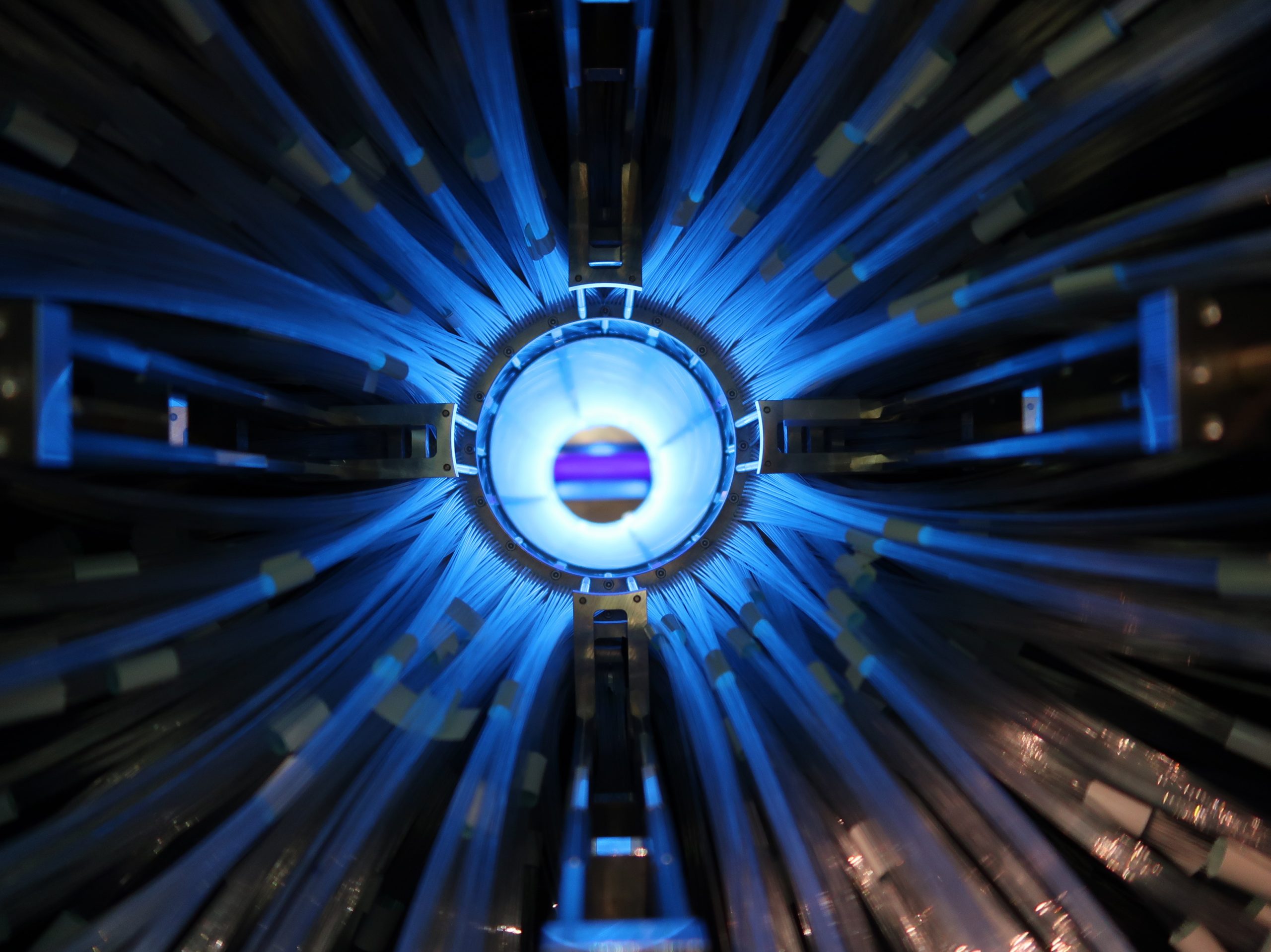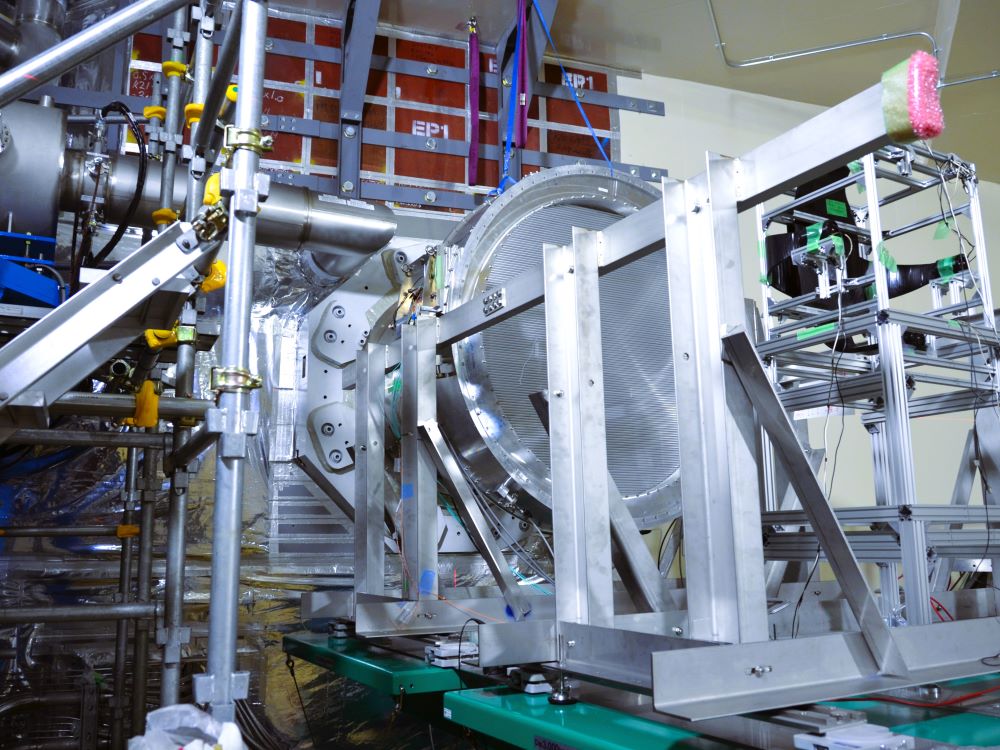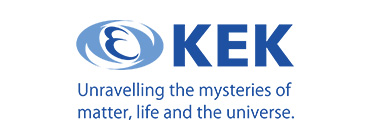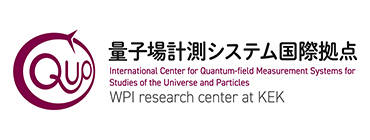- Topics
Significant Milestone: Completion of Dedicated Beamline for COMET Experiment
May 23rd, 2023
The dedicated beamline “C-Line” for the COMET experiment has been successfully completed at the J-PARC research facility in Tokai village, Ibaraki prefecture. This beamline supplies proton beams used in the generation of muon beams for the COMET experiment. By extracting pulsed proton beams with an energy of 8 giga-electron volts (GeV) from the accelerator and irradiating them onto the pion production target, the experiment has achieved successful testing. The generated pions are transported to the experimental laboratory through the muon beamline, where they are confirmed to decay into muons.
The COMET (COherent Muon to Electron Transition) experiment is an international collaborative project aimed at discovering new physics beyond the Standard Model (SM) of elementary particle physics using muons. In 2018, the extraction of the proton beams from the J-PARC main ring to the hadron experimental facility was achieved, but at that time, the existing beamline called “A-Line” was utilized, which did not allow for the measurement of muons generated through the pion decay produced in the backward required for the COMET experiment. With the completion of the dedicated beamline “C-Line” designed for the COMET experiment, the measurement of muon beams required by COMET has become possible for the first time.
At the J-PARC, The COMET experiment is searching for the coherent neutrinoless conversion of muons into electrons in the field of a nucleus (called “muon-electron conversion,”) which is extremely unlikely, the estimated probability of an occurrence is approximately one in 100 trillion. According to the SM, the muon will decay to produce an electron with two neutrinos. Alternatively, some may be captured by the nucleus, emitting a neutrino in the process. In these cases, the total number of each flavor of lepton does not change; this is called Lepton Flavor Conservation. However, the “muon-electron conversion” involves the muon converting into an electron without emitting neutrinos, violating this conservation rule. If muon-electron conversion can be found, it is undoubtable evidence of new physics beyond the standard model.
Phase-α before moving forward to the Staged Approach
The COMET Collaboration employs a staged approach for the COMET experiment, “COMET Phase-I” and “COMET Phase-II.” However, before stepping forward to these stages, a preliminary phase named “Phase α(Alpha)” was conducted to measure the secondary particles supplied through the beamline. The objective of the experiment was to investigate the muon yield and momentum distribution. However, various particles other than muons also reach the experimental laboratory. In Phase α, the primary goal was to identify these particles and study their flight characteristics. Following Phase α, the COMET experiment will commence full-scale experimental preparations to explore the “muon-electron conversion,” which is the main purpose of the physics measurements. Dr. Wataru Oishi from Imperial College London, who has been involved in the COMET experiment for nearly a decade since his student days, expressed his joy at the completion of the COMET beamline, which has been designed over many years. He said, “It is an indescribable feeling to see the culmination of our efforts, which has been done through a continuous series of small-scale tests.”
A straw tube detector was also installed for the first time in the laboratory, located in a radiation-controlled area. This is an ultra-low mass charged particle track detector installed upstream of the electromagnetic calorimeter for the beam measurement in the COMET experiment. It will be utilized for momentum measurements of electrons and particle identification.
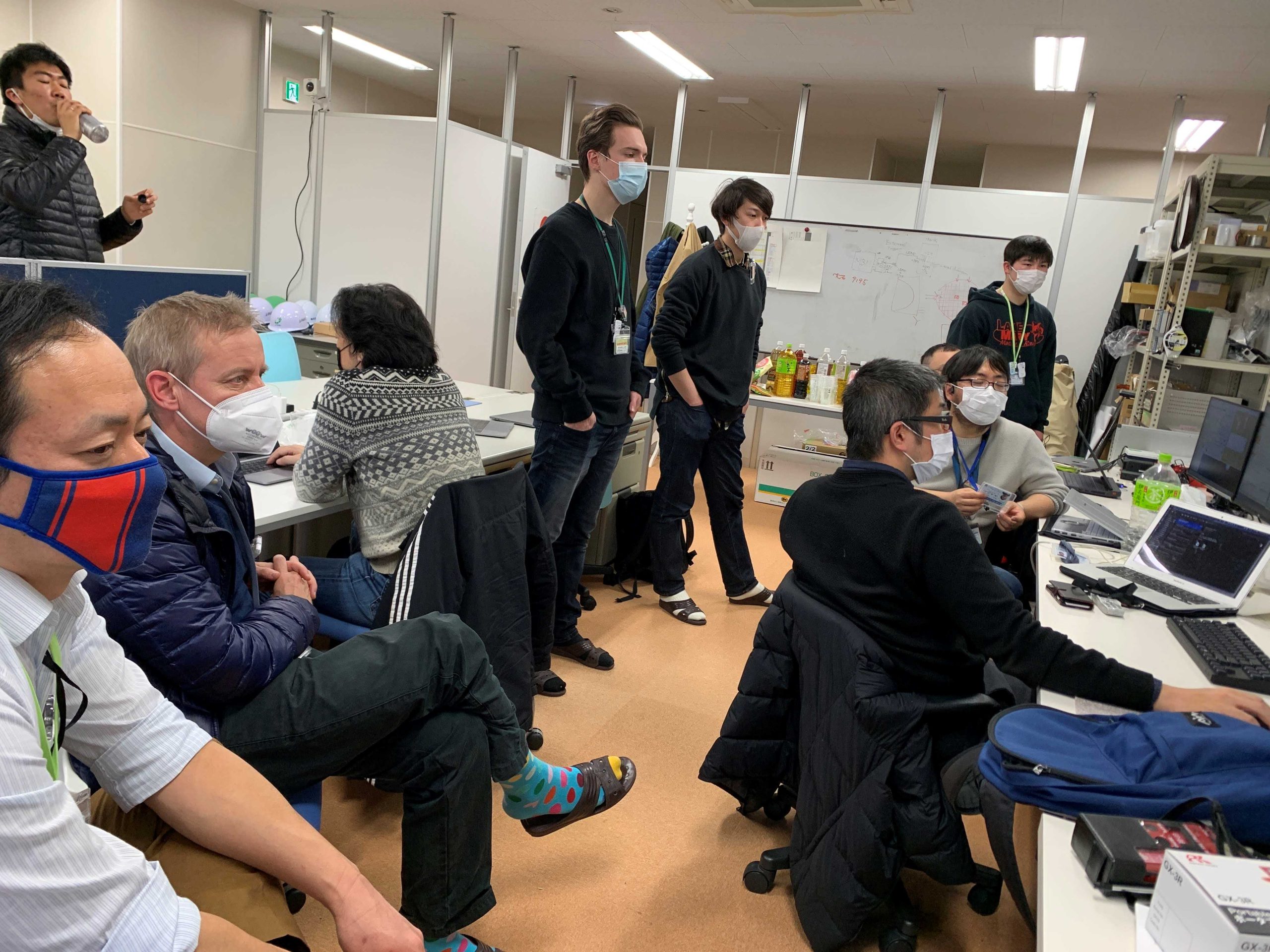
Obsearving the testrun with overseas collaborators
More than 290 researchers from 48 institutions around the world, including Japan (KEK, Osaka Univ., Kyusyu Univ. and others), the United Kingdom, India, China and Russia are involved in the COMET experiment. Due to the COVID-19 pandemic since 2020, it has been challenging for overseas collaborators to visit Japan. However, restrictions have finally been eased, and the UK team spent two months in Tokai to install the mask system at the entrance of the muon beamline during Phase α to restrict the beam injection position. Additionally, overseas collaborators participated in the test run conducted in early February and observed its progress. Despite the delays caused by the pandemic preventing the arrival of overseas collaborators and the resulting setbacks in the schedule, the entire COMET Collaboration is now excited to have reached out to the stage where experiments using the beam can be conducted. The Collaboration meetings are held twice a year, and in November 2022, a hybrid-style meeting was held, with researchers from overseas gathering in the conference room in Tokai village for discussions, which was a long-awaited reunion.
Empowering Young Researchers
In conjunction with the construction of the new beamline, a new device called the range counter has been installed in the laboratory. Developed by Shion Kuribayashi, a graduate student at Osaka University, this detector is designed to identify charged particles that arrive at the beamline and estimate their momentum. In the COMET experiment, a proton beam accelerated in the J-PARC main ring is irradiated onto a target to generate a large number of pions. During their flight to the laboratory, these pions decay into muons, which then either decay into two neutrinos and an electron or get captured by atomic nuclei, emitting one neutrino. The proportions of these particles are determined by analyzing experimental data and utilizing simulation data. The COMET Collaboration actively involves graduate students and young researchers in detector fabrication, data collection, and data analysis to foster talent capable of designing new experiments while learning the fundamentals of particle physics.
Associate Professor Hajime Nishiguchi, who has been involved in the COMET experiment since obtaining his doctorate degree in 2008, expressed his satisfaction with the results of the trial run, stating, “We have finally reached this point. With the completion and demonstrated performance of the dedicated beamline for the COMET experiment, we are now entering the final stages of experiment preparation as we move towards the actual experiment.”
The COMET Collaboration will work on the development of facilities and detectors to commence the physics data acquisition.

